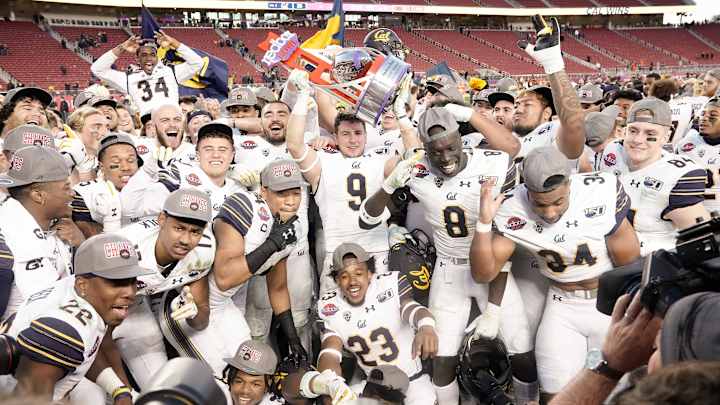Cal Football: Will Bears Get to Show Their Potential in 2020? It's Complicated in COVID-19 Era

The ongoing question for Cal football fans—and one that won’t be answered at least until the end of May—is whether there will be a college football season in 2020 and what it will look like if there is.
Cal has high hopes for the 2020 season because most of its key players return from last season's 8-5 team that won its final three games.
UC Berkeley has yet to decide whether fall classes will be held on campus, and that decision will have a dramatic effect on Cal’s economics, as an April 20 story by the San Francisco Chronicle pointed out.
According that story, Chancellor Carol Christ estimated the budget impact of COVID-19 on the school to be “in the range of $200 million.” She also stated in an email, according to the Chronicle, that revenue is being lost from a variety of sources, including intercollegiate athletics.
Many universities and athletic departments desperately need the revenue football brings. Can college football be played if campuses remain closed and courses continue to be taught online in the fall?
Not likely.
The commissioners of the major conferences told vice president Mike Pence in no uncertain terms last week that if campuses are not open, games will not be played.
"Our players are students. If we're not in college, we're not having contests," said Big 12 commissioner Bob Bowlsby, according to a CBS Sports.com report. "Our message was, we need to get universities and colleges back open, that we were education-based programs, and we weren't going to have sports until we had something closer to normal college going on."
Mountain West Commissioner Craig Thompson minced no words in his response to that issue: “We will not have college athletics until the campuses are open,” he said during the MW Network video below:
Video courtesy of the MW Network
Major League Baseball is trying to find ways to have a season in 2020, and Dr. Anthony Fauci, the director of the National Institute of Allergy and Infectious Diseases, said in an April 20 interview on Yes We’re Here that he saw two possible scenarios to resume baseball at some point in the future.
One option he noted would be to play games with no people in the stands, making games a television-only spectator event. The other scenario would be to allow a limited number of people in the stands, making sure they are sufficiently separated while wearing masks and other gear.
Could college football adopt one of those models? It's not as simple for college sports?
Dr. Fauci also said that the relaxation of restrictions—whenever that happens—should be regionally based, because the pandemic is more prevalent in some areas of the United States than in others. That issue complicates things for college football.
Could Cal’s 2020 opener at UNLV be played because there have been fewer than 4,000 reported confirmed or probable cases of the coronavirus in Nevada as opposed to more than 30,000 in California, according to the CDC website?
And with the state of Oregon having fewer than 2,000 reported cases, will Oregon and Oregon State open their campuses earlier than Cal, allowing those two schools to have football practice while other Pac-12 schools cannot? Could Cal play its Oct. 24 game in Corvallis, Ore., in that case?
“Those are going to be some very heavy questions for us to address,” said Thompson in the above video, noting that his Mountain West Conference includes Wyoming, which has no shelter-in-place orders.
That regional issue might be something the pro sports consider when trying to construct a season.
But as ESPN college football analyst Chris Fowler said in an Instagram video earlier this month, “College football is way more complicated than any pro sport.”
It is difficult to get all the factions involved to agree as to when college football should resume, as a CBS Sports story suggests. And starting it too early could have dire health ramifications.
Who will have the final word on the fate of the college football season? Health officials? College presidents? State governors? The President? The NCAA?
“There seems to be a lot of debate over that these days,” Thompson said.
Fowler suggests three possible scenarios in his video of informed speculation, and spring football is a prominent possibility. Games would be played in February, March, April and May, and the postseason might be in June. It might conflict with other sports, but it would prevent the financial calamity that the loss of an entire college football season might create.
Imagine Cal playing in a major bowl game at the same time Wimbledon or the NBA draft are taking place.
Bay Area head coaches, including Justin Wilcox, posted public service messages earlier this month:

Jake Curtis worked in the San Francisco Chronicle sports department for 27 years, covering virtually every sport, including numerous Final Fours, several college football national championship games, an NBA Finals, world championship boxing matches and a World Cup. He was a Cal beat writer for many of those years, and won awards for his feature stories.